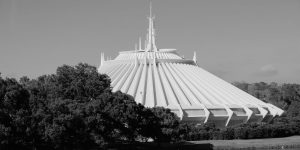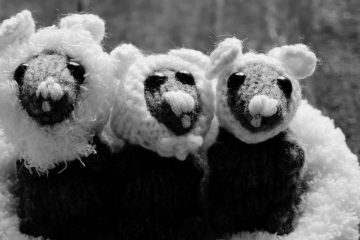What Happened On July 17th?
On July 17, 1955, Walt Disney’s vision came to life when Disneyland opened its doors to the public for the first time. Located in Anaheim, California, this amusement park differed from anything the world had seen before. It offered a place where children and adults could enjoy a world of fantasy and adventure. Nevertheless, the opening day faced numerous challenges and unexpected issues.
Disneyland’s opening day, often referred to as “Black Sunday,” turned chaotic. The park was designed for 15,000 guests, but due to counterfeit tickets and overwhelming demand, over 28,000 people showed up. Rides broke down, food and drink supplies ran out, and the plumbing system failed, causing water fountains to malfunction in the sweltering heat.
The asphalt on Main Street, U.S.A., had been poured only a few hours before the park opened. In the intense July heat, the asphalt hadn’t fully set, causing high-heeled shoes to sink into the pavement. A plumber’s strike forced Disney to choose between working bathrooms and drinking fountains. He opted for the bathrooms, leading to some guests accusing him of trying to force them to buy sodas.
Walt Disney’s Dream
Walt Disney wanted a park where families could enjoy time together and where stories and characters from his films could come to life. Visits to amusement parks with his daughters, Diane and Sharon, inspired this vision. He found these parks lacking in cleanliness and family-oriented attractions, which motivated him to create something entirely new. Disney envisioned Disneyland as a place where imagination ruled, and every corner of the park would be meticulously themed and crafted.
Disney overcame many challenges to realize his vision. He dealt with financial constraints and skepticism from investors and the media. Many doubted the feasibility of such a large and ambitious amusement park. To fund the project, Disney secured loans and formed strategic partnerships, including a crucial deal with the American Broadcasting Company (ABC), which agreed to help with construction costs in exchange for a weekly TV show, “Disneyland.”
Creativity & Ingenuity
Transportation within the park relied heavily on traditional methods since the famous Disneyland Monorail wasn’t operational until 1959. The Disneyland Railroad circled the park and provided a scenic overview of the various lands.
Disney’s team showed their creativity by using real orange trees for Disneyland’s Jungle Cruise. They uprooted and replanted these trees upside down to create a more exotic look. They painted the roots green to mimic foliage, demonstrating their commitment to creating a believable and immersive environment.
The opening day broadcast, watched by over 70 million people, faced numerous challenges. Art Linkletter, Ronald Reagan, and Bob Cummings hosted the live telecast, which included missed cues and technical difficulties. At one point, a camera captured Walt Disney wiping his sweaty palms on his suit. This showed all who were watching the immense pressure he was under.

Enchantment Begins
Despite the rocky start, guests quickly fell in love with Disneyland. They marveled at the park’s themed lands—Adventureland, Tomorrowland, Fantasyland, and Frontierland. Each area offered unique attractions and experiences, from the excitement of the Pirates of the Caribbean ride to the charm of the Mad Tea Party teacups.
Sleeping Beauty Castle, the park’s centerpiece, drew inspiration from Neuschwanstein Castle in Germany and became a symbol of Disneyland. This fairy-tale castle remains an enduring image associated with the Disney brand.
Walt Disney paid close attention to detail beyond the attractions. He often walked around the park, picking up litter and interacting with guests to ensure they had a positive experience. His dedication to maintaining a clean and welcoming environment set Disneyland apart from other amusement parks of the time.
The Disneyland Influence
Disneyland’s success led to the creation of other Disney parks around the world. Walt Disney World in Florida, Tokyo Disneyland, Disneyland Paris, Hong Kong Disneyland, and Shanghai Disneyland all built upon Disney’s original vision. Each park introduced new themes and attractions while maintaining the core principles of imagination, family fun, and careful attention to detail.
Walt Disney didn’t just establish an amusement park; he changed the entertainment industry. Disneyland introduced the idea of a theme park, where each ride and attraction is part of a larger story. This innovation influenced countless other amusement parks and entertainment venues worldwide, such as LEGOLAND.
Founded in 1968 in Billund, Denmark, LEGOLAND aimed to create an immersive experience based on the popular LEGO building blocks. Like Disneyland, LEGOLAND focused on themed areas and attractions that brought its iconic bricks to life. LEGOLAND Billund included a miniature version of famous landmarks, much like Disneyland’s detailed environments. The collaboration between LEGO designers and theme park planners mirrored Disney’s own creative process as well as their innovative approach to family entertainment.
Disneyland’s Timeless Appeal
Disneyland’s opening day started a new era in entertainment. The event showed the world that with enough imagination and perseverance, dreams could indeed come true. Walt Disney’s legacy lives on in the millions of visitors who continue to experience Disneyland each year, proving that his vision was not only achievable but timeless.
In the years following its opening, Disneyland continually evolved, adding new attractions and lands to keep up with changing times and technologies. Disney’s ability to innovate while preserving the park’s core values stood as a testament to his lasting impact on the world of entertainment and storytelling.





